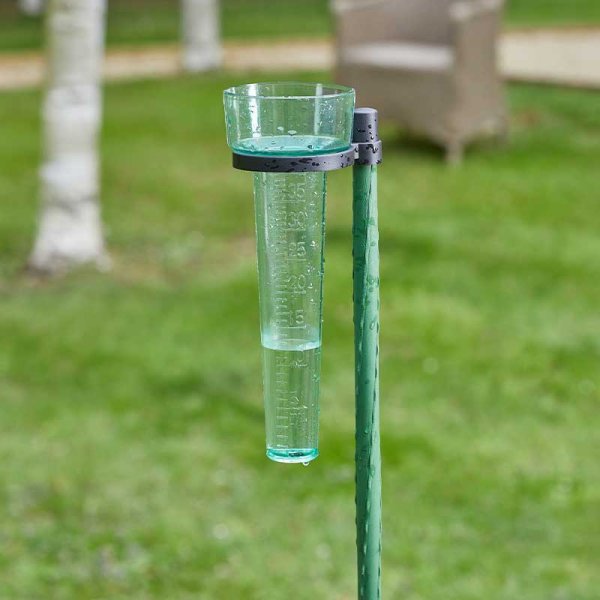Professional Tips for Utilizing a Rain Gauge to Monitor Citizen Weather Issues
Professional Tips for Utilizing a Rain Gauge to Monitor Citizen Weather Issues
Blog Article
Unveiling the Scientific Research Behind Rain Assesses: Exactly How These Instruments Play a Critical Function in Environment Research and Ecological Surveillance
Rain determines, seemingly basic devices, hold an extensive significance in the realm of environment study and environmental surveillance. These unassuming instruments silently accumulate among nature's most important components-- rains. Yet, behind their unpretentious facade exists a complex science that is vital for understanding the dynamics of our setting. As we peel off back the layers of this clinical shroud surrounding rain determines, we reveal a world where precision, data accuracy, and careful monitoring merge to introduce a much deeper understanding of our transforming climate and its influence on the planet.
Value of Rain Gauges
Rain gauges play a vital function in tracking and measuring rainfall levels, providing important information for climate study and evaluation. These tools are essential in quantifying the quantity of rainfall that happens in a specific location over a particular period. By determining and collecting rainwater, rain determines deal important insights into the circulation and intensity of rainfall, helping meteorologists, hydrologists, and climatologists in understanding weather condition patterns and patterns.
In addition, lasting data gathered from rainfall determines helps in examining environment change effects and patterns, contributing substantially to clinical study and decision-making procedures. In essence, rainfall evaluates offer as essential tools in the area of weather forecasting and ecological scientific research, playing a crucial role in progressing our understanding of weather and climate dynamics.
Sorts Of Rainfall Scales

Capability and Procedure
In the world of climate research and meteorological studies, the efficiency of rain gauges lies in their complex capability and exact functional systems. Rain assesses are developed to properly determine the amount of rainfall that falls over a specific location during a set duration.
The performance of rainfall evaluates is based upon the principle of accumulating and gauging rainwater in a standard manner. This gathered information is important for understanding neighborhood weather patterns, tracking long-lasting environment patterns, and assessing environmental influences. To ensure precise dimensions, rainfall evaluates demand to be strategically put in open locations far from blockages such as buildings or trees that might disrupt the collection procedure.
The operational element of rain assesses entails regular maintenance to avoid particles build-up, calibration checks to keep dimension accuracy, and data taping for evaluation (rain gauge). Overall, the capability and procedure of rainfall gauges are vital for collecting reliable precipitation data important to climate research study and environmental tracking
Function in Environment Research Study
Provided the important relevance of precise rainfall measurements in comprehending weather condition patterns and ecological influences, the function of rain evaluates in climate research is essential. Rain assesses give crucial information for climate study by measuring the quantity of precipitation that falls over a details area throughout an offered duration. This data is essential for monitoring long-term patterns in precipitation patterns, assessing the influence of environment modification on rains circulation, and enhancing climate versions.

Climate researchers use data accumulated from rain gauges to evaluate variations in rainfall degrees, determine local climate fads, and review the efficiency of water source administration approaches. By comparing historic precipitation data with present dimensions, scientists can identify shifts in precipitation patterns, such as changes in the regularity or strength of rainfall occasions. This details is crucial for understanding exactly how environment change is affecting rainfall dynamics and can explanation aid policymakers make notified choices regarding adaptation and reduction strategies.
Applications in Ecological Surveillance

In flooding projecting, rain gauge information assists to track rains strength and distribution, enabling authorities to provide timely cautions and take essential read procedures to reduce flood threats (rain gauge). Dry spell surveillance depends on rain scale data to evaluate moisture degrees in the soil and track precipitation deficiencies, aiding in the identification of drought-prone locations and the application of drought response strategies
Moreover, rain scale information plays an important duty in water source management by giving details on water schedule and usage fads. This data is made use of to make educated choices relating to water appropriation, preservation measures, and lasting water source planning. In addition, in agriculture, rainfall gauge information aids farmers in enhancing irrigation routines, plant choice, and total farm management practices based on neighborhood precipitation patterns. On the whole, rain evaluates are crucial tools in ecological monitoring, supplying valuable understandings that add to educated decision-making and sustainable source management.
Final Thought
To conclude, rain assesses are crucial devices for gauging rainfall, providing important data for climate research study and environmental monitoring. With various types and capabilities, rainfall assesses play a crucial duty in recognizing rainfall patterns and their influence on the setting. By properly determining rainfall, these devices add to the development of scientific knowledge and help in making educated choices associated to water resource management and calamity readiness.
Rainfall evaluates play a vital function in tracking and measuring rainfall degrees, supplying vital data for environment research study and analysis. The common rain scale, understood as the "tipping bucket" scale, is one of the most frequently utilized devices. Ultrasonic rain determines usage noise waves to discover Click This Link the presence of rainfall, providing real-time information on rainfall degrees.Environment researchers use data collected from rainfall evaluates to analyze variants in precipitation levels, identify local climate fads, and assess the performance of water resource monitoring methods.In final thought, rainfall assesses are essential devices for determining precipitation, providing beneficial data for environment research and environmental surveillance.
Report this page